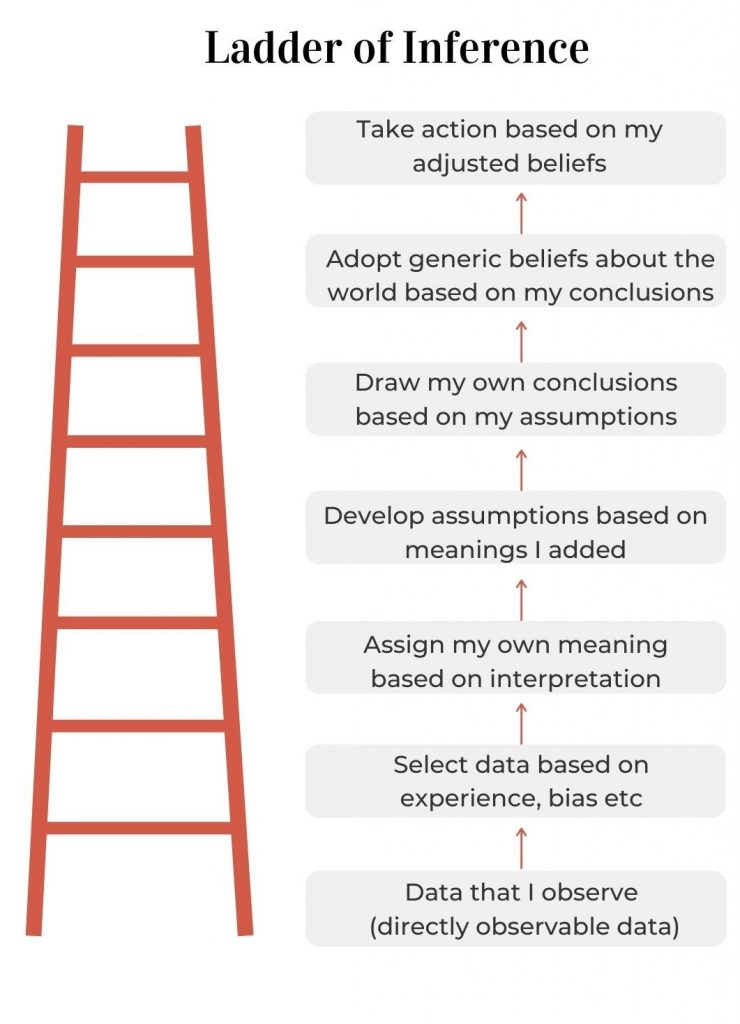How to have Courageous Conversations
How to have Courageous Conversations. Difficult people do exist at work. Difficult people come in every variety and no workplace is without them. How difficult you find that person to deal with depends on your self-esteem, your self-confidence and your professional courage. Dealing with difficult people is easier when the person is just generally obnoxious or when the behaviour affects more than one person. Dealing with difficult people is much tougher when they are attacking you personally or undermining your professional contribution.
Why Deal With Difficult People?
Unaddressed, your situation won’t get any better and it usually gets worse. Unaddressed conflict at work simmers just below the surface, often erupts unexpectedly and affects work productivity.
Initially, unprofessional behaviour will come as a shock. Once you are fully aware of what is happening, deciding to live with the situation long term is not an option.
Importantly, if you are embroiled in a constant conflict, you may not only be blamed for being “unable to handle the situation, you may be labelled as a “difficult” person, yourself.
Definition of a “Difficult Person”
These are those people you can’t stand, who don’t do what you want them to do, or do what you don’t want them to do.
Exercise: Difficult Personalities and Behavioural Patterns
The purpose of this exercise is to understand difficult personalities and behavioural patterns and develop effective coping strategies.
Refer to the article Dealing With Difficult and Upset People, then answer the questions below.
Get to Know the Types
When have you been successful in managing difficult personalities and behaviours?
What did you do that others found to be effective? What were the outcomes?
Recognise the Part You Play.
Describe one or more situations in which you were not effective in managing difficult personalities and behaviours.
What prevented me from managing difficult personalities and behaviours?
Knowing what I now know, what would I do differently in a similar situation?
Understand that everyone reacts differently to these types of behaviour: The person who is most irritating to you may be perfectly acceptable to someone else.
We can all be difficult at times. The one thing that we have control over is ourselves. We can look at where we direct our energy and effort in order to exert positive energy. The stress response is a natural response to perceived threats in our environment. It is important to recognise that this response is natural, but that we have the power to choose our response and take a proactive approach to managing ourselves.
The key to changing our reactions to the behaviour of others is:
- Awareness of our own behaviour
- Accepting that we need to change our response
Taking that Action. Choose Your Approach.
Now that you know that you have both control and choice as to how you react, you can react in one of the following four ways. For each of these, record the advantages and disadvantages below.
- Stay and do nothing
- Vote with your feet
- Change your attitude
- Change your behaviour
Now let’s discuss some techniques!
Find out more below about Veriskills and LHQ to learn more…
Ladder of Inference and Advocacy and Inquiry
Initially developed by Chris Argyris The Ladder of Inference attempts to explain how, when faced with a “situation”, we tend to behave or “jump to conclusions”.

If you ask the average person “why they behaved in a particular way?” when faced with a given situation, they would probably say that “it seemed obvious to them” or that “it was instinctive”. Courageous Conversations.
The Ladder of Inference model suggests that we all have a “data bank” of experience in our head that we refer to when anything happens and that we go through a number of steps in order to reach our conclusions. Courageous Conversations.
As we compare what is happening to us in the current situation with our stored experience, we make assumptions based on our experience and hence we come to conclusions and then act accordingly. The steps are shown on the next page.
Unfortunately, this step-by-step process is usually short circuited by the fact that, since the process happens so quickly, what may seem perfectly clear in our own mind is obvious only to us.
What actually happens is that as there is more data than our minds can hold we tend to register only some of the available data and ignore the rest. Courageous Conversations.
We “select” (although not necessarily consciously) what we deem to be significant or important, or data that in some way catches our attention.
Once we have selected data, we begin to add meaning to it.
We interpret (make assumptions about) what we see, hear, read, feel and we impose our own interpretations on the data and then draw our conclusions from it.
We lose sight of how we do this because we do not think about our thinking. Hence, the conclusions feel so obvious to us that we see no need to retrace the steps we took from the data we selected to the conclusions we reached.
When we state our brilliant idea or act in what we believe is the appropriate manner, we might not mention the reasoning that led us to that, idea or action, we might not cite the facts that we’ve selected and that have influenced our conclusion. Our conclusions may seem so clear, so obvious, and so valuable to us, but not, unfortunately, to others.
We each have our own, different, data bank, based on our different experiences and hence our different perceptions of the same piece of information.
In order to avoid each of us jumping to “our own conclusions” and assuming that others have come to the same conclusion, we need to descend the ladders and try to understand the different viewpoints and assumptions of others.
Advocacy and Inquiry Process!
Helps you have difficult Courageous conversations in a way that results in deeper understanding for both parties. It enables you to really talk to someone.
STEP 1:
When I see < D. O. D. > (Directly Observable Data)
STEP 2:
I think it means < ……………… >
STEP 3:
My concern is < ……………… >
STEP 4:
What are you experiencing when < D. O. D.> (Directly Observable Data)
One can gain leverage for improving Courageous conversations by paying attention to advocacy and inquiry_
This is where Advocacy and Inquiry plays an important role.
- Advocacy is about making statements, saying what you think, giving your point of view etc.
- Inquiry is about asking questions in order to understand the other’s point of view.
The use of Advocacy and Inquiry, in the right proportions, should promote mutual learning.
In any conversation we can be high or low on advocacy and we can be high or low on inquiry.
- High Advocacy / Low Inquiry
This is one-way communication – even if both people are doing it. It can be useful for giving information but it does not necessarily lead to exploring different points of view or agreeing to/ building commitment to a course of action. Advocacy that imposes the speaker’s views on others usually creates compliance or resistance.
- High Inquiry / Low Advocacy
This is one-way communication in a different sense. The speaker does not state their views. It is useful as a way of finding out information, however, it can create difficulty when the speaker has a hidden agenda and/or is using questions to get the other person to “discover” what the speaker already thinks is right.
- Low Inquiry / Low Advocacy
This is also one-way. Here, people watch but contribute little. This is okay when being an observer is useful. It can create difficulty when people withhold their views on key issues and cover this up by staying on safe subjects.
- High Advocacy / High Inquiry
This fosters two-way communication and learning. I state my views, and encourage you to inquire into my views, and I invite you to state your views and I inquire into your views.
Moving Up the Learning Curve
Balancing advocacy with inquiry is necessary, but insufficient, for ensuring learning. For mutual learning to occur, the quality of advocacy and inquiry is also critical.
Saying “That’s a stupid idea. Were you born that way?” is both a statement and a question, but it doesn’t promote learning.
The Ladder of Inference is one tool that can help guide high-quality advocacy and inquiry
- High quality advocacy involves providing data and explaining how you move from this data to your view of the situation.
- High-quality inquiry involves seeking others’ views, probing how they arrived at them, and encouraging them to challenge your perspective.
- Balancing high-quality advocacy with high-quality inquiry makes significant learning possible for all involved.
Difficult or Courageous Conversations Tips.
Brain-friendly: We have a great capacity for complex and creative thinking. Unfortunately we have habitually developed ways of interacting that interfere with that capacity. Brain-friendly courageous conversations are structured to account for how our brain is principally organised and follow a process that creates the optimal environment for focus, insight, solution-focus and social connection – all the ingredients for employee innovation and collaboration.
Courageous Conversations are designed to reduce the myriad of potential threat responses in the brain that draw precious brain fuel away from the pre-frontal cortex, our thinking brain, to our primitive limbic system (our emotional and survival centre) – resulting in a literal ‘logic shutdown’. Brain-friendly Courageous conversations also focus deliberately on questioning techniques designed to enable insight – the AHA moment – which is an underused, powerful motivator in terms of employee engagement and behaviour.
Emotionally balanced: You would know from your own experience that you cannot be really upset and think logically at the same time. Perhaps you have experienced making some less than desirable decisions in a moment of excitement? Our brain cannot be limbic (emotional) and logic (PFC focused) at the same time.
Toward focused: Neuroplasticity is the brain’s ability to rewire itself based on response to experience. It’s how we adapt to our environment, and it is one of the ‘big neuroscience discoveries’.
Hebb’s Law tells us that ‘neurons that fire together, wire together’. We create and strengthen neuronal connections and pathways through attention and focus. The more attention we give to a particular pathway the stronger it becomes and the more prevalent it will be in our thinking, particularly when under stress when we have less executive brain to control where our thinking goes.
Creating new thinking means creating new neural pathways, and that happens via attention. Courageous Conversations deliberately need to focus on the Toward State – where we need to go and how we need to get there. So many of our work Courageous conversations focus on where we have been, and the issues at hand…which is interesting, but not particularly useful
Check your ego, set your intention. There’s nothing wrong with a healthy ego, but your ego can get in the way of expressing yourself in ways that serve a positive outcome – for you and for others. There’s a difference between speaking up and talking down to someone, making them feel smaller, stupid or small. Before you enter into a courageous conversation, be very clear about why you are having it. What’s the highest purpose you are trying to serve? If you aren’t clear, discuss it with someone else or write it down, keeping in mind that if it’s about you ‘winning’ then that implies someone else must lose.
Speaking your mind is not fruitful unless it’s done thoughtfully and with a clearly defined rationale for why this is ultimately of service to all parties. It may sound corny, but the truth is that a message that comes from the heart, lands on the heart.
Mean what you say. Dr. William Schutz, behaviour specialist and founder of Human Element Solutions, once said “If people in business told the truth, 80 to 90% of their problems would disappear.” Be candid in your feedback and honest in your opinion. Say what you sincerely believe needs to be said, even if you know others may not enjoy hearing it. People can intuitively tell when you are being sincere. They can also tell when you aren’t. Don’t sugar coat the truth in fluffy compliments and disingenuous flattery.
Share what it is you want to say, and be sure to phrase it in a way that others know you respect their humanity, if not their opinion or actions. In the aftermath of the Challenger disaster in 1986, NASA found that the engineers working on the spacecraft had concerns about the O rings when exposed to extreme heat but their fear of passing on information kept them from passing it up to their supervisors. While your silence may not put lives at risk, it does undermine your ability to succeed.
Set the emotional tone. The more sensitive an issue, the more rapidly emotions can escalate to fever pitch when put on the table. If the issue you are addressing is likely to push emotional buttons, be extra careful to ensure you step into it calmly, with a clear idea of what you want to say. It may be worth rehearsing the conversation ahead of time, writing down the key points you want to convey (in case emotions start to hijack your brain) and how you will respond constructively to whatever accusations, grievances or upsets may be bought up. Remember, you have to manage your own emotions first before you can respond well to another’s. If you start getting upset, call time out.
Facts First. There are always two sides to every story. Before you launch into your opinion of a situation, be sure to clearly state the facts as you see them. It’s possible you may have incomplete information. When you present your opinion as though it was the truth, you are guaranteed to get people off side. So use language that leaves open the possibility of another interpretation on the situation. “I realize I may be missing something, but from what I can see it appears that …”
Discuss the ‘Undiscussable’. Issues that aren’t talked out get acted out in snide remarks and innuendoes, higher absenteeism and turnover, and lower productivity and engagement. When you are discussing something sensitive, what is left unsaid is often what the conversation really needs to be about. Skirting around the real issue is fruitless. Likewise, burying your head in the sand in the vain hope that an issue will just ‘go away’ on its own is not only cowardly, it’s costly. Acknowledge the unspoken; discuss the “undiscussable.” The cost of engaging in difficult Courageous conversations far outweighs the discomfort you feel having it.
Don’t stoop. People don’t always act as we’d like or how we’d expect them to. Such is life. Don’t let the bad behaviour of others be an excuse for your own. While it’s tempting to descend to the same level of pettiness or immaturity as others, it serves no positive purpose. Be the change you want to see in others – when they act small, act big.
Counter defensiveness with humility. When we share something with someone that has an implied criticism, we shouldn’t be surprised when they get defensive. Counter their defensiveness by distinguishing the problem (behaviour or issue) from the person, and invite their input in how to address the issue. Often the solution to a problem is far from obvious. To you or anyone else. Be willing to ask for help in figuring out a better path moving forward, acknowledging that you don’t have the answer but would like to work together to find it. Just as you appreciate when others share their struggles openly with you, so too will others appreciate your own candour and vulnerability.
Be clear in your requests and commitments. When going in to a conversation, be clear about the actions or outcomes you’d like to see. Don’t assume others know what you want them to do. Make clear requests with specific actions. E.g. “I would like your support on xyz.” Likewise, only agree to things you are clear you can do. If you can’t find common ground on a path forward, at least agree to stay in dialogue, and if appropriate, schedule another meeting to continue the discussion.
Stay future-focused. There’s a reason so many people excel at laying blame, throwing stones, and criticizing others’ mistakes. It’s easy. Staying focused on what needs to change to keep the same problem from arising again in the future takes more discipline. So regardless of how many stones you’d like to throw, let them go and focus instead on what you’d like to see more of – whether it’s collaboration, clear communication, better systems, or more accountability.
What to learn more?
LeadershipHQ are excited to be working with Veriskills where our Leadership Essentials Program where you are awarded for Collaboration outcomes. Leadership Essentials Program are either a self-paced (not Veriskills) or a group and one on one leadership program which takes 6-9 months and gives participants the human capabilities, tools, skills and resources to be the best person and leader they can be.
The Human Capability outcomes you will be awarded on completion of our Leadership Essentials program are as follows:
- Initiative and Drive (Level 3)
- Communication (Level 3)
- Collaboration (Level 3)
- Empathy (Level 3)
Click here to learn more about Veriskills™, and the Human Capability Framework.
This program and coaching will take your leadership skills to the next level!
Leadership isn’t easy and sometimes we need help. I am always here.
Get in touch today to learn more about how to collaborate and set yourself up for success!
Stay Kind. Stay Courageous.
Sonia x



